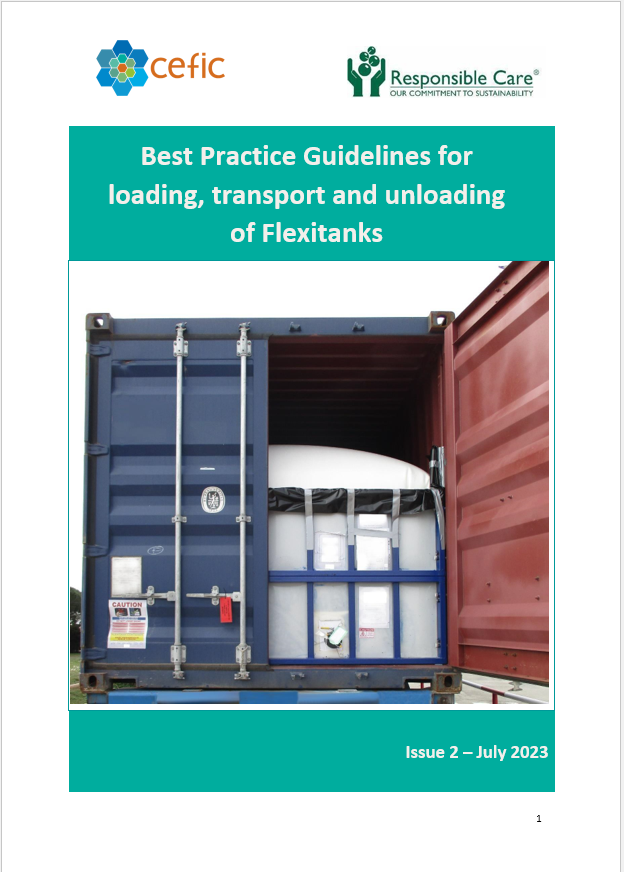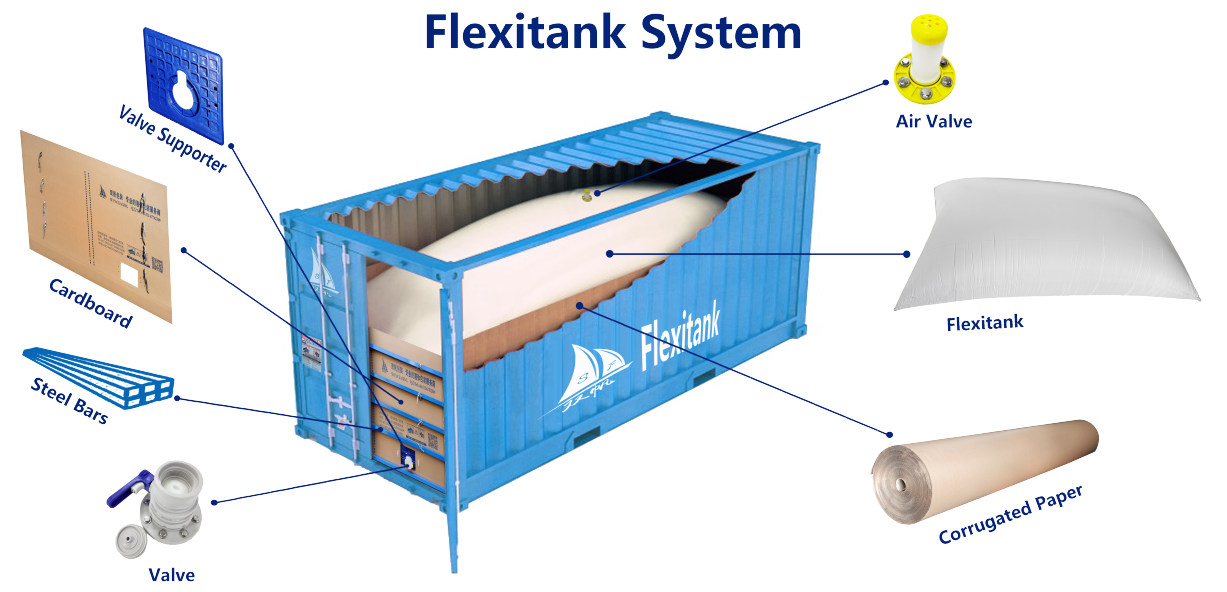Best Practice Guidelines for loading, transport and unloading of flexitanks / Ed. July 2023
| Appunti Merci Pericolose | ||
| 11 Maggio 2025 | ||
| Salve Visitatore | ||
Best Practice Guidelines ID 6354 | 04.08.2023 Update CEFIC, July 2023 A Flexitank, also known as a Flexitank system, is a soft, light bladder, fitted within a standard 20-foot drybox container (see also chapter Definitions and Abbreviations for further details). The scope of these guidelines is restricted to the use of Flexitanks for the transport of bulk non-dangerous liquid cargoes within a general purpose (GP) 20-foot freight container. The bladder is generally intended for single use. Under the aspect of sustainability, it is important that the Flexibag system should be recyclable. For the purpose of this guideline a Flexitank system as described in PAS 1008 will be referred to as a Flexitank. The bladder will be referred to as the Flexibag. Transportation in Flexitanks of bulk chemical products not classified as dangerous goods is becoming an attractive alternative to transport in ISO tank containers. In the early days, a Flexitank damage resulted in leaks, loss of cargo and subsequent clean-up activities. The root cause was typically attributed to inappropriate handling and fitting and impact forces during transport of the Flexitank. In recent years, Flexitank producers and operators have achieved major improvements in bag manufacturing, container selection criteria, as well as safe loading and unloading practices. This has led to a reduction in the number of spills and leaks. These improvements, in combination with a continuous search by shippers for lower cost options for the transport of certain types of non-dangerous cargoes, has resulted in a significant increase of the number of Flexitank movements over the last decade. Incidents involving Flexitanks pose a higher risk to result in a loss of containment compared to tank containers. The use of Flexitanks for the carriage of non-dangerous liquid chemicals should therefore only be carried out with the appropriate equipment and following the right operating procedures. The continuous increase in use of Flexitanks and the importance of this intermodal transport unit make a review necessary. Certain areas of the 2018 Guideline have been updated, including: compatibility test criteria for a safe using of “Flexibag materials”, scope of responsibilities of each agent of the Flexitank Supply Chain, ISO 14001 or equivalent standard for Flexibag disposer and driver skills for road transport “leg”.
1. Introduction 2. Objective and scope 3. Risk assessment 4. Equipment requirements 5. Operating procedures 6. Flexitank manufacturer and operator qualifications 7. Incident Management 8. Checklists 9. Agents involved in the Flexitank distribution chain 10. Definitions and Abbreviations Fonte: CEFIC |
||
 |
||
|
è un sito di INVIO NEWSLETTTER Se vuoi cancellarti dall'invio della newsletter oppure effettua il login al sito ed entra nella Tua Area Riservata, in “Modifica dati” agisci con la spunta sul box di selezione “Newsletter”. L'elenco completo di tutte le ns newsletter è qui: Archivio newletter |
||
  |
||
| Certifico Srl 2000-2025 | VAT IT02442650541 | ||



































